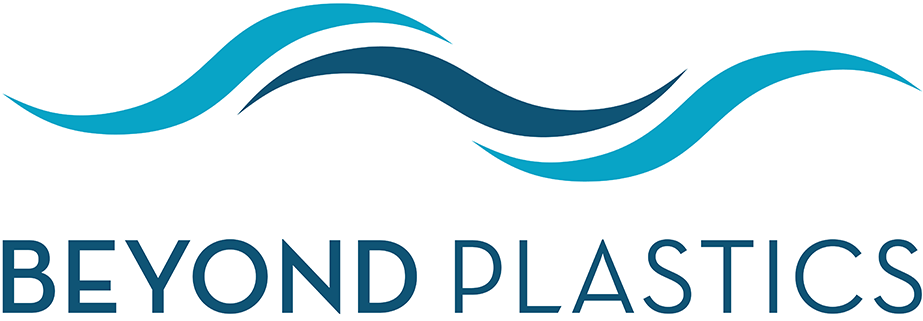HOW TO HOLD AN EFFECTIVE VIRTUAL MEETING WITH YOUR MEMBER OF CONGRESS ABOUT THE BFFPPA
Also known as a lobby visit, these meetings are the single most effective way to educate your elected representative about plastic pollution and encourage them to take action to address the plastic pollution crisis by co-sponsoring and working to pass The Break Free From Plastic Pollution Act and supporting the recommendations in the recent Federal Stimulus Spending Report.
Please note that although constituents may travel to Washington, DC or meet in one of the representative’s in-district offices in normal times, during the COVID-19 pandemic, all constituent meetings are conveniently done via Zoom.
Below are our tips for how to organize an effective meeting with your member of Congress.
1. GET TO KNOW YOUR LEGISLATOR
Before scheduling your visit, take a little bit of time to find out what your legislator's point of view and voting record is. Check to see if your House member and your two U.S. Senators are already co-sponsors of the Break Free From Plastic Pollution Act - view the co-sponsors for the House version and the co-sponsors for the Senate version of the bill. You can check out the legislator's website, social media, and other public statements to get a read on their opinions and priorities.
2. REQUEST YOUR MEETING
Make your request via email (click here for a sample request email you can modify) and follow up with a call to the office Scheduler. Make sure to:
Suggest specific times and dates for your meeting. Give them 3 options, not just one.
Let them know what issue and legislation (including the bill number, if you have one) you wish to discuss.
Make it clear that you wish to meet with your member of Congress rather than a staff person (but be prepared to accept that you may ultimately meet with a staffer.)
Make sure they know that you are a constituent and include your mailing address, etc.
Be prepared to follow up multiple times! Members of Congress are very busy and so are their schedulers. If you don't hear back within a couple of days, follow up via email and or by giving the office a call. Ask to speak to the scheduler — you'll likely be prompted to leave a message. Continue emailing and calling until the scheduler responds. Note: make sure that you call only during office hours.
3. ASSEMBLE YOUR A-TEAM
Decide who will attend the meeting. Keep it to about 5-10 people and try to choose people who represent different groups that have an interest in the issue or legislation like nurses, scientists, religious leaders, environmental advocates, and trusted allies. Please note that attendance will be limited to a small group and you will need to provide the names and contact information of anyone involved to the scheduler ahead of time. Focus on people who are well-spoken, can stay on message, and can be counted on to show up.
4. GATHER YOUR MATERIALS
We recommend sharing the BFFPPA’s official press packet along with the federal stimulus recommendations. You can also check our website for materials as we have information to help you draft your talking points, as well as additional materials that you can share with your team and send to your elected official before the meeting. In addition to the resources on our Learn page, you may want to check out our fracked plastic facts.
5. DO A PREP MEETING WITH THE TEAM WHO’LL BE ATTENDING THE MEETING
Decide what you want to achieve. Clearly, your top priority is convincing your member of Congress to co-sponsor the BFFPPA and to follow the recommendations in the federal stimulus spending report. Making a very specific request gives you a way to measure how successful your visit has been.
Agree on your talking points. It's tough to make a strong case for your position when you are disagreeing in the meeting so if a point is causing tension in the group, leave it out! Keep in mind that facts are important and personal stories have been shown to be very effective in these meetings. For example, someone might talk about the way seeing local beaches or lake shores littered with plastic trash motivated them to get involved, a medical professional could talk about the rise in obesity they’ve witnessed in their practice (obesity is linked to endocrine disruptors found in plastics), a veterinarian or birding enthusiast could share facts about birds eating plastic at record rates, a teacher or parent could talk about the way their students or children responded to seeing a video of a sea turtle with a plastic straw stuck up its nose, etc. If you live in a fenceline community, personal stories should abound of negative health impacts, flaring incidents, shelter in place orders, and more.
Choose a meeting leader. This person will get the ball rolling, will be responsible for keeping people within their allotted time to speak, and make sure that any and all follow up items are clear at the end of the meeting.
Plan your meeting. People can get nervous in a meeting, and time is very limited (remember, you’ll have just 10 or 20 minutes and that time has to include introductions, etc.) Sketch out the meeting beforehand, including who will start the conversation and which points you’d like each participant to cover, in how much time (keep it super brief). Have everyone practice their comments on the call to provide feedback on what is working and what is not and help determine if they need to trim their remarks, etc. Even if the meeting is not going well, everyone needs to be polite and respectful. If you know of people who are not able to contain their frustrations during meetings, do not invite them to this meeting. You do not want to burn bridges.
6. SEND YOUR MATERIALS BEFORE THE MEETING
Share the packet of information including the press packet and stimulus recommendations with the elected official’s office a week or so in advance of your meeting date. This should include things like a summary of any bills you’ll be discussing (and bill numbers), press materials, petition signatures you may have gathered, etc. Sharing these things in advance makes it harder for the representative to plead ignorance of the issue/legislation during the meeting.
Make sure to provide the names of your meeting attendees to the congressperson’s office by the deadline they specify and, if your meeting is taking place over Zoom, let everyone know that their display name will need to match the name you provided in order for them to participate.
7. MAKE THE MEETING COUNT
Be on time! Tell your group to arrive/log on 15 minutes early and be patient—it is not unusual for elected officials to run late or to have your meeting interrupted by other business.
Be courteous. Start the meeting by introducing yourselves (mentioning your professional affiliations as well as any personal connections people in your group may have to the representative) and thanking them for the meeting.
Stay on topic. Stick to your talking points and gently move people along if their remarks go long. Remember to provide personal and local examples of the impact of plastic pollution and/or of the legislation you’re pushing for or against. This is the most important thing you can do in a lobby visit.
Be truthful. If you don’t know the answer to a question, you should say, "I don't know" and tell your legislator that you will get that information for him or her shortly. This lets you get your best argument on record and into their files and gives you a handy excuse to follow up with them again about your issue. Do NOT make up an answer which could damage your credibility.
Set a deadline for a response/decision. Often, if an elected official hasn't taken a position on legislation, they will not commit to one in the middle of a meeting. If they need to think about it, or if you are meeting with a staff member, ask when you should check back in to find out what your legislator intends to do regarding your request. If you need to get information to your legislator, set a clear timeline for when this will happen. That way, you won’t be left hanging indefinitely.
8. FOLLOW UP AFTER THE MEETING
Once the meeting ends, compare notes with your group to make sure you’re on the same page regarding what the elected official committed to do and what follow up information you need to send and who will do it.
Say thank you. Each person who participated in the meeting should promptly send a personal thank you email to the elected official or staffer thanking them for their time and reiterating the request and timeline from the meeting.
Share follow up materials in a timely fashion with the staffer or elected official.
If the elected official or staff member doesn't meet the deadline for action you agreed to during the meeting, ask him or her to set another deadline. Be persistent and flexible.
Ask everyone who participated in the meeting to write a Letter To the Editor (see our tips here) of a local newspaper about the visit, thanking the elected official and reiterating your hopes for co-sponsorship or other action to address plastic pollution. Elected officials monitor any mentions of them in the news closely so this can go a long way.
If you use social media, tweet about or post about your meeting, tagging your representative to say thank you for their time and reiterate your request to co-sponsor the bill (or thank them if they’ve agreed to do so.)
In the ensuing weeks and months, follow your representative's actions on the issue you spoke about. If he/she votes favorably in the future, continue to send thank you notes and to share your appreciation via social media. It's very important to show our support when our elected officials get things right.
9. KEEP US IN THE LOOP!
If you’re meeting with a member of Congress or their staffer, let us know - you can email us here. Knowing what arguments your Congress member used, what issues are important to them, and what positions they took will help us make our federal efforts more effective.

